外研版中考英语二轮语法总复习课件--句子种类 上
文档属性
| 名称 | 外研版中考英语二轮语法总复习课件--句子种类 上 | 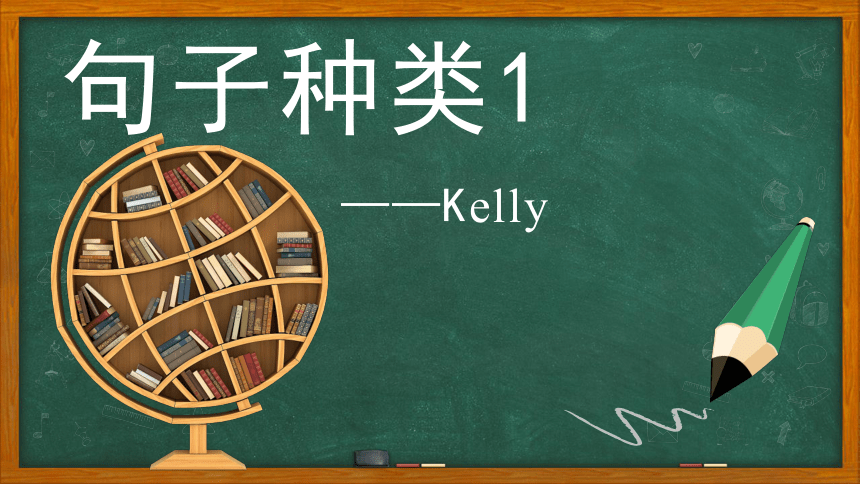 | |
| 格式 | pptx | ||
| 文件大小 | 4.1MB | ||
| 资源类型 | 试卷 | ||
| 版本资源 | 外研版 | ||
| 科目 | 英语 | ||
| 更新时间 | 2023-12-04 21:20:28 | ||
图片预览

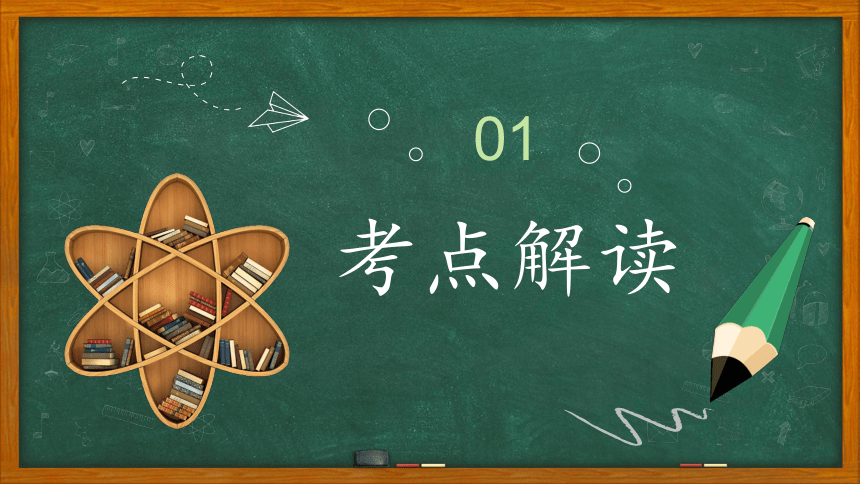
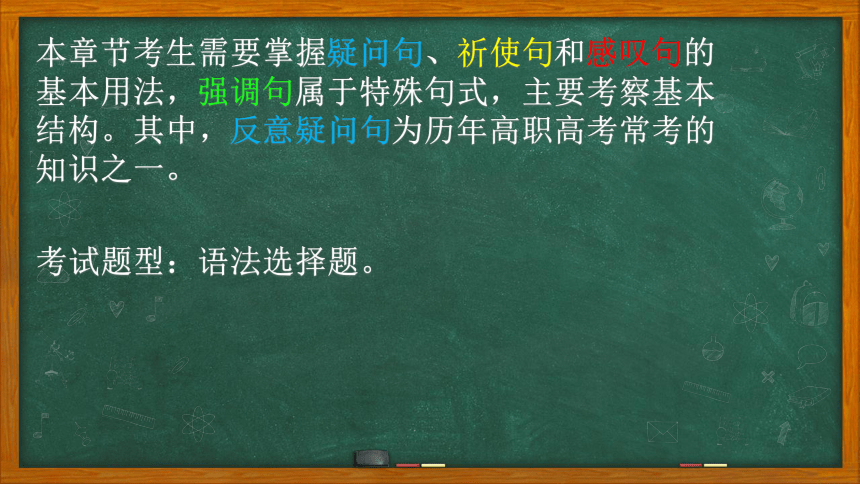

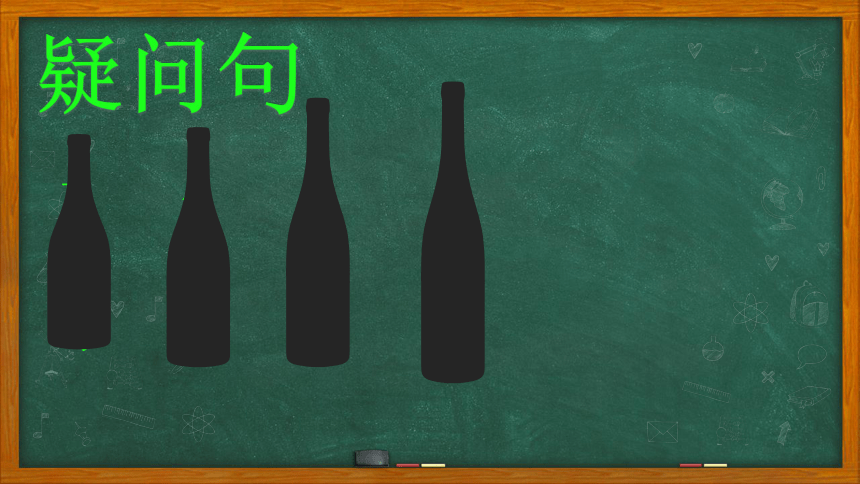
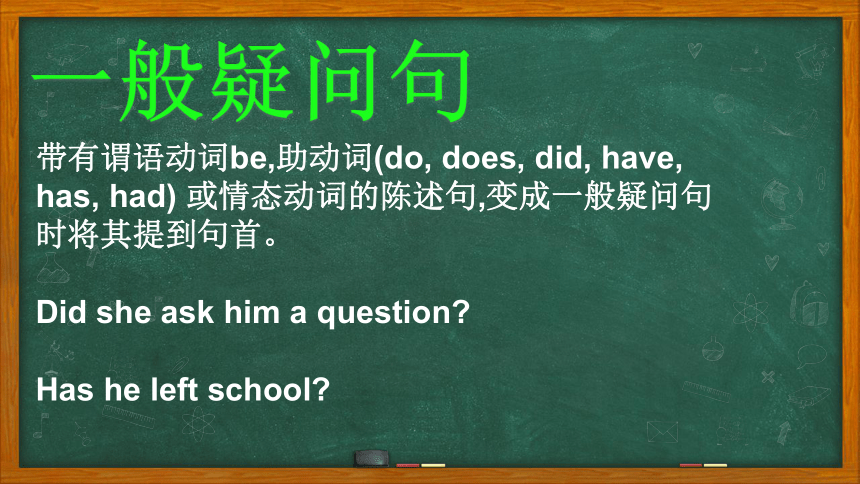

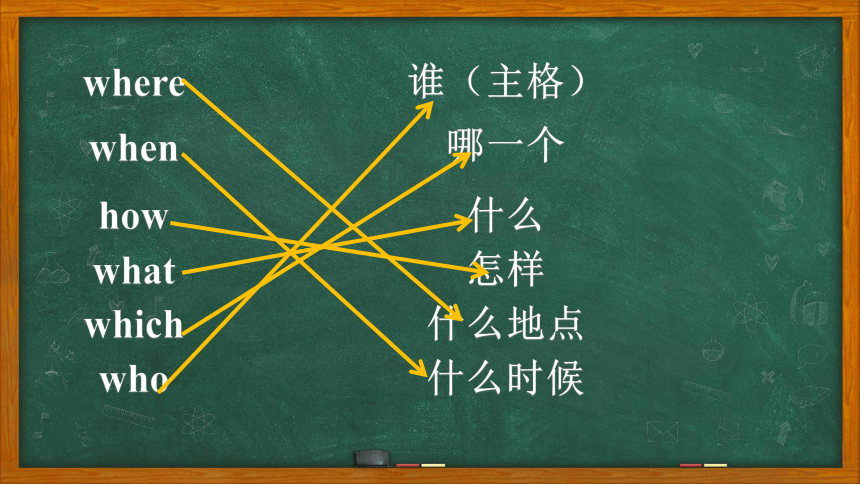
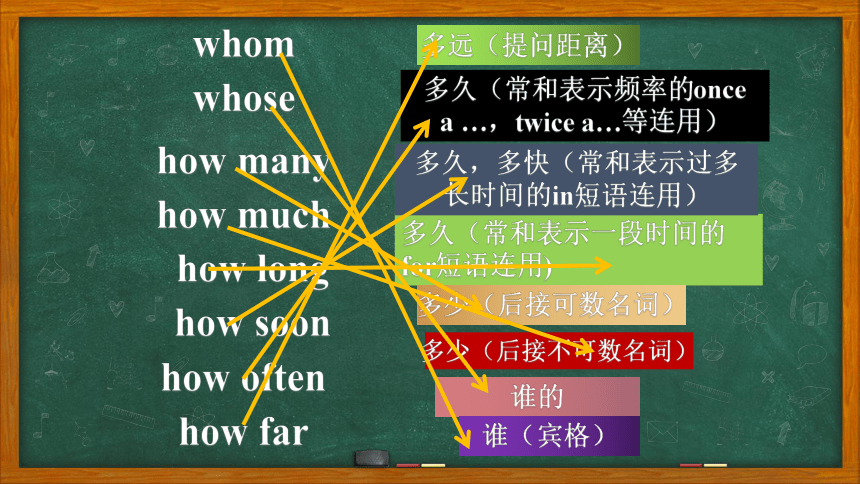
文档简介
(共21张PPT)
句子种类1
——Kelly
考点解读
01
本章节考生需要掌握疑问句、祈使句和感叹句的基本用法,强调句属于特殊句式,主要考察基本结构。其中,反意疑问句为历年高职高考常考的知识之一。
考试题型:语法选择题。
知识结构
02
疑问句
一般疑问句
反义疑问句
特殊疑问句
选择疑问句
一般疑问句
带有谓语动词be,助动词(do, does, did, have, has, had) 或情态动词的陈述句,变成一般疑问句时将其提到句首。
Did she ask him a question
Has he left school
特殊疑问句
由特殊疑问词引导的句子为特殊疑问句。
常见的特殊疑问词有:
where
when
how
what
怎样
which
who
什么地点
什么时候
谁(主格)
哪一个
什么
whom
whose
how many
how much
多久(常和表示一段时间的for短语连用)
how long
how often
多少(后接可数名词)
多少(后接不可数名词)
多远(提问距离)
多久(常和表示频率的once a …,twice a…等连用)
多久,多快(常和表示过多长时间的in短语连用)
how far
how soon
谁的
谁(宾格)
反意疑问句
反意疑问句为附加在陈述句之后,对前面表示的事实或观点提出疑问的句子。
反意疑问句有两种结构:
①肯定的陈述句+否定的回答;
②否定的陈述句+肯定的回答。
解题原则
①前肯后否,前否后肯;
②前后的人称、时态以及单复数形式要一致;
③回答“否定的陈述句+肯定的提问”时,应尊重事实,即事实是肯定的就用“Yes+肯定结构”;事实是否定的,则用“No+否定结构”。
—You can’t swim, can you
你不会游泳,是吧?
—Yes, I can./No, I can’t.我会。/我不会。
—You can’t swim, can you
你不会游泳,是吧?
—You can swim, can’t you
你不会游泳,是吧?
Everybody likes swimming, don’t they
Everything here seems all right, doesn’t it
特殊情形
1.陈述部分有hardly, never, few, nothing ,little, nobody, seldom等否定词或半否定词,其疑问部分要用肯定。
He made few friends here, did he
他在这几乎没交什么朋友,是吗?
She said nothing, did she
她什么也没说,是吗?
很少,不常
2.陈述部分是带有否定前缀的词,疑问部分仍然用否定。
It is unfair, isn’t it 这不公平,不是吗?
3.陈述部分为祈使句,无论肯定还是否定,反意疑问部分用will you。
Please help us, will you 请帮帮我们,好吗
Come with us, will you 同我们一起去,好吗
以Let's开头的祈使句,反意提问用shall we;
以Let us开头的祈使句,反意提问用will you。
Let’s go there together, shall we
我们一起去,好吗?
Let us do the exercises by ourselves, will you
让我们自已做这些练习,好吗
4.当前句的谓语动词是have 时,反意问句部分有两种形式:
做助动词
(出现在完成时态)
做实义动词
(表示“有、吃、
不得不”)
用have的相应形式
用do/does/did
She has gone there, hasn’t she
她去了那里,不是吗?
They had to leave early, didn’t they 他们必须早点离开,是吗?
5.当前句的谓语动词是need或dare(敢) 时,反意问句部分有两种形式
做实义动词
(后接to do sth.; 否定用don’t need\dare)
做情态动词
(后接do sth.;否定用needn’t\ daren’t)
用do/does/did
用need或dare
You need to buy a better dictionary, don’t you 需要买本好一点的字典,不是吗 (实义动词)
I needn't tell you the answer, need I
我不需要告诉你答案,是吗 (情态动词)
6.当前句的谓语动词是must时,反意问句部分有三种形式:
表示“必须”“有必要”
needn’t
表示“推测”
表示“禁止”
must
根据must后面的动词结构采用相对应的形式
You must leave at once, needn’t you
You mustn’t laugh, must you
She must have finished her homework, hasn’t she
7.陈述句带有used to 或ought to肯定形式的反意疑问句,附加疑问句的谓语可用两种形式:
used to
ought to
usedn’t/didn’t+主语
oughtn’t/shouldn’t+主语
You used to smoke, usedn’t / didn’t you
He ought to follow her advice, oughtn’t /shouldn’t he
8.由there be引导的反意疑问句,附加疑问句应用there。
There are six people in the house,aren’t there
9.陈述部分的主语为everybody, everyone, nobody, anyone指人的不定代词时,疑问部分用they;
陈述部分的主语为everything, something, nothing, anything指物的不定代词时,疑问部分用it。
Everybody likes swimming, don’t they
Everything here seems all right, doesn’t it
10.陈述部分为主从复合句的反意疑问句,其反意疑问句有两种情况:
①一般情况下,疑问部分应与主句保持一致。如:
She said that he didn’t like it, didn’t she
她说他不喜欢它,是不是?
②当陈述部分的主语为第一人称且其后接
think/ believe/ suppose等时,疑问部分通常
与从句保持一致。
I think that it is too short, isn't it
我认为它太短了,对不对
选择疑问句
选择疑问句提出两种答案供对方选择。选择疑问句以or为标志,并需直接回答问题。如:
—Are you from the south or the north
你来自南方还是北方?
—I’ m from the south.我来自南方。
看
观
谢
谢
句子种类1
——Kelly
考点解读
01
本章节考生需要掌握疑问句、祈使句和感叹句的基本用法,强调句属于特殊句式,主要考察基本结构。其中,反意疑问句为历年高职高考常考的知识之一。
考试题型:语法选择题。
知识结构
02
疑问句
一般疑问句
反义疑问句
特殊疑问句
选择疑问句
一般疑问句
带有谓语动词be,助动词(do, does, did, have, has, had) 或情态动词的陈述句,变成一般疑问句时将其提到句首。
Did she ask him a question
Has he left school
特殊疑问句
由特殊疑问词引导的句子为特殊疑问句。
常见的特殊疑问词有:
where
when
how
what
怎样
which
who
什么地点
什么时候
谁(主格)
哪一个
什么
whom
whose
how many
how much
多久(常和表示一段时间的for短语连用)
how long
how often
多少(后接可数名词)
多少(后接不可数名词)
多远(提问距离)
多久(常和表示频率的once a …,twice a…等连用)
多久,多快(常和表示过多长时间的in短语连用)
how far
how soon
谁的
谁(宾格)
反意疑问句
反意疑问句为附加在陈述句之后,对前面表示的事实或观点提出疑问的句子。
反意疑问句有两种结构:
①肯定的陈述句+否定的回答;
②否定的陈述句+肯定的回答。
解题原则
①前肯后否,前否后肯;
②前后的人称、时态以及单复数形式要一致;
③回答“否定的陈述句+肯定的提问”时,应尊重事实,即事实是肯定的就用“Yes+肯定结构”;事实是否定的,则用“No+否定结构”。
—You can’t swim, can you
你不会游泳,是吧?
—Yes, I can./No, I can’t.我会。/我不会。
—You can’t swim, can you
你不会游泳,是吧?
—You can swim, can’t you
你不会游泳,是吧?
Everybody likes swimming, don’t they
Everything here seems all right, doesn’t it
特殊情形
1.陈述部分有hardly, never, few, nothing ,little, nobody, seldom等否定词或半否定词,其疑问部分要用肯定。
He made few friends here, did he
他在这几乎没交什么朋友,是吗?
She said nothing, did she
她什么也没说,是吗?
很少,不常
2.陈述部分是带有否定前缀的词,疑问部分仍然用否定。
It is unfair, isn’t it 这不公平,不是吗?
3.陈述部分为祈使句,无论肯定还是否定,反意疑问部分用will you。
Please help us, will you 请帮帮我们,好吗
Come with us, will you 同我们一起去,好吗
以Let's开头的祈使句,反意提问用shall we;
以Let us开头的祈使句,反意提问用will you。
Let’s go there together, shall we
我们一起去,好吗?
Let us do the exercises by ourselves, will you
让我们自已做这些练习,好吗
4.当前句的谓语动词是have 时,反意问句部分有两种形式:
做助动词
(出现在完成时态)
做实义动词
(表示“有、吃、
不得不”)
用have的相应形式
用do/does/did
She has gone there, hasn’t she
她去了那里,不是吗?
They had to leave early, didn’t they 他们必须早点离开,是吗?
5.当前句的谓语动词是need或dare(敢) 时,反意问句部分有两种形式
做实义动词
(后接to do sth.; 否定用don’t need\dare)
做情态动词
(后接do sth.;否定用needn’t\ daren’t)
用do/does/did
用need或dare
You need to buy a better dictionary, don’t you 需要买本好一点的字典,不是吗 (实义动词)
I needn't tell you the answer, need I
我不需要告诉你答案,是吗 (情态动词)
6.当前句的谓语动词是must时,反意问句部分有三种形式:
表示“必须”“有必要”
needn’t
表示“推测”
表示“禁止”
must
根据must后面的动词结构采用相对应的形式
You must leave at once, needn’t you
You mustn’t laugh, must you
She must have finished her homework, hasn’t she
7.陈述句带有used to 或ought to肯定形式的反意疑问句,附加疑问句的谓语可用两种形式:
used to
ought to
usedn’t/didn’t+主语
oughtn’t/shouldn’t+主语
You used to smoke, usedn’t / didn’t you
He ought to follow her advice, oughtn’t /shouldn’t he
8.由there be引导的反意疑问句,附加疑问句应用there。
There are six people in the house,aren’t there
9.陈述部分的主语为everybody, everyone, nobody, anyone指人的不定代词时,疑问部分用they;
陈述部分的主语为everything, something, nothing, anything指物的不定代词时,疑问部分用it。
Everybody likes swimming, don’t they
Everything here seems all right, doesn’t it
10.陈述部分为主从复合句的反意疑问句,其反意疑问句有两种情况:
①一般情况下,疑问部分应与主句保持一致。如:
She said that he didn’t like it, didn’t she
她说他不喜欢它,是不是?
②当陈述部分的主语为第一人称且其后接
think/ believe/ suppose等时,疑问部分通常
与从句保持一致。
I think that it is too short, isn't it
我认为它太短了,对不对
选择疑问句
选择疑问句提出两种答案供对方选择。选择疑问句以or为标志,并需直接回答问题。如:
—Are you from the south or the north
你来自南方还是北方?
—I’ m from the south.我来自南方。
看
观
谢
谢
同课章节目录
- 词法
- 名词
- 动词和动词短语
- 动词语态
- 动词时态
- 助动词和情态动词
- 非谓语动词
- 冠词
- 代词
- 数词和量词
- 形容词副词及其比较等级
- 介词和介词短语
- 连词和感叹词
- 构词法
- 相似、相近词比较
- 句法
- 陈述句
- 一般疑问句和否定疑问句
- 特殊疑问句及选择疑问句
- 反意疑问句
- 存在句(There be句型)
- 宾语从句
- 定语从句
- 状语从句
- 主谓一致问题
- 简单句
- 并列句
- 复合句
- 主谓一致
- 主、表语从句
- 名词性从句
- 直接引语和间接引语
- 虚拟语气
- 感叹句
- 强调句
- 倒装句
- 祈使句
- 句子的成分
- 句子的分类
- 题型专区
- 单项选择部分
- 易错题
- 完形填空
- 阅读理解
- 词汇练习
- 听说训练
- 句型转换
- 补全对话
- 短文改错
- 翻译
- 书面表达
- 任务型阅读
- 语法填空
- 其他资料
